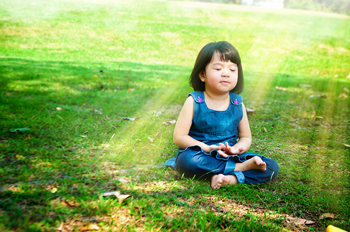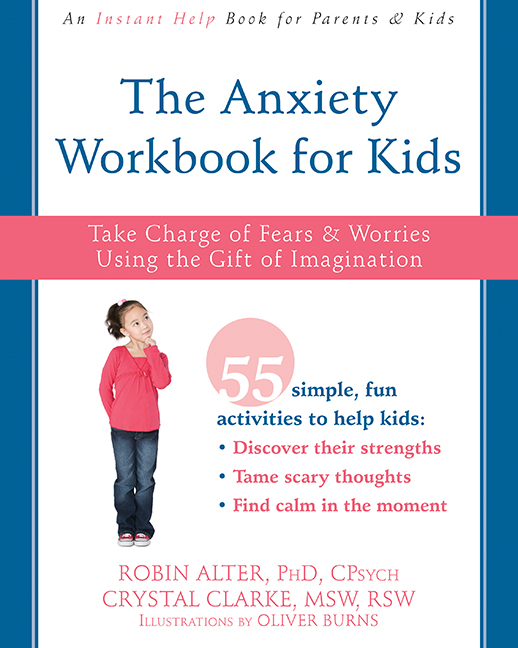Is a mindfulness practice really worth it?
Would it have any impact anyway?
How can I fit this into my busy schedule?
When people think about mindfulness, they wince at having to commit to long meditative practices that seem unrealistic—and sometimes the benefit of a mindfulness practice is unclear. The truth is that mindful moments can occur in almost any environment, at almost any time, with real, impactful results.
Throughout my career, with both adults and school-aged children, I’ve incorporated moments of mindfulness into my practice. I encourage mindfulness in my clients across environments. Mindful moments can occur anywhere—individually, at a chosen time throughout the day, as a family, or a group. They can take place at home, in therapeutic settings, or even in the workplace, in the community, and in schools.
PART I: How to Cultivate a Practice in Your Schedule
What Does It Mean to Be Mindful?
Mindfulness, or being “mindful,” means to purposefully notice your experience in your present environment. It involves noticing your own body, your senses, thoughts, feelings, and the environment around you—without judging any of these things as good or bad. It is fully being present by solely existing in, and noticing, the present moment.
Why Take the Time to Be Mindful?
The practice of being more mindful has numerous benefits, for adults and children alike. Through more fully noticing your experience, you foster concentration, attention, and awareness—of yourself and the world around you. You become more in touch with your own thoughts and feelings, and you may be more likely to make choices and actions that better reflect, and even strengthen, your own core values and knowledge. Whether in the home, at work, or in the school environment, the time it takes for a few mindful moments each day is well outweighed by the benefits and reverberating effects.
While mindfulness is more than just a method of relaxation, it can contribute to a sense of calm.
Taking Mindful Moments Alone
As with most new skills, learning to be more mindful can take practice at the beginning, but it can soon become a habit. While first getting comfortable with the experience of being more mindful, set aside just five minutes a day to be mindful of your experience. We can encourage children to do this as well.
Find a calm, relatively quiet place to sit comfortably. Then focus on your breathing and prepare to notice all of your senses. Notice how your body feels: the temperature, objects or structures against your body (like your chair, the floor, or your clothing). Notice your vision. If your eyes are closed you can still notice the shades of light or dark from behind your eyelids. Notice any noises you hear in the environment. Note any smells in the room, or any tastes lingering in your mouth. Pay attention to your thoughts and feelings, too. Notice these without judging them. Remember that no matter what comes to mind, you are neither in the past nor the future, but in this moment. You can use these steps as a general guide, but remember to take your time and focus on more fully noticing your experience.
Once you have a better understanding of what it means to be mindful, you can choose to take more spontaneous mindful moments at any time throughout your day. You can rediscover the present moment on your daily walk or drive by noticing the color of the sky and the leaves on the trees. You can chew more slowly and notice the taste and texture of your food. You can even bring more mindfulness to your interactions with others.
PART II: Practicing Mindfulness in Your Community
Taking Mindful Moments with Your Family
Some families choose to engage in mindful moments together. Not only is it a positive family experience, but it can also create a sense of accountability. If all family members are being more mindful, it can encourage more mindfulness outside the family group practice. Because hectic schedules often get in the way, plan family mindful moments that are realistic in terms of time, location, and duration. Choose a time of day and duration when you know you will all be together (at the breakfast table, or at bedtime, for example). Then, stick to it! If mindful moments are not made a priority, they can easily fall to the wayside.
Taking Mindful Moments in Groups/Schools
While the use of mindfulness practice has long been present in therapeutic sessions and meditative groups, it’s also gaining popularity within school systems, and other children’s settings, around the world. For years, in addition to using mindfulness in individual or family sessions with children and adults, I’ve also experienced positive results incorporating mindfulness practices into groups run with school-aged children. By building this practice into the regular structure of a group—whether in a therapeutic group or a classroom/school setting—this provides young people with a regular space in which they can experience these mindful moments in an often otherwise chaotic world filled with schedules, and with worries about the past and the future.
Implementing this practice may seem tedious and time-consuming, but let’s consider the potential impact. First, it provides kids with regular opportunities to reflect upon their own thoughts, feelings, and experiences in the hope that they might better use that self-awareness in their decision-making throughout the day. A mindfulness practice also results in young people making more positive choices rather than responding reactively.

When I facilitate mindful moments with kids, I like to start the moment of mindfulness with the use of a meditation bell or chime. The sound cues the start of the mindful moment, and it immediately engages the participants in mindful listening; everyone can focus their sense of hearing until they can no longer hear the echoing of the bell/chime. This could be followed by a guided meditation (which could include a variation of the mindfulness instructions provided above, or another guided meditation), or a silent mindful moment, in which each person can be present in their own experience within the group (once the children/youth have gained comfort with these mindful moments).
Mindfulness is contagious. Encouraging mindful moments across all of your daily environments fosters more of these moments. Try these practices, and I promise you that mindful moments will be found and created with more ease. With this heightened awareness, and opportunities for mindful moments, individuals, and entire families and communities will reap the benefits.
Check out the free accessories for The Anxiety Workbook for Kids! Includes free mindfulness worksheet.
Crystal Clarke, MSW, RSW, coauthor of The Anxiety Workbook for Kids, has her own private practice, Clarke Psychotherapy, in Toronto, Canada, in addition to supporting children and youth in schools. She specializes in therapeutic work with children and families, as well as anxiety. She is a Psychoanalytic Candidate and provides psychodynamic psychotherapy for adults.




 2024 Peace Playbook: 3 Tactics to Avoid Clashes with Your Partner
2024 Peace Playbook: 3 Tactics to Avoid Clashes with Your Partner